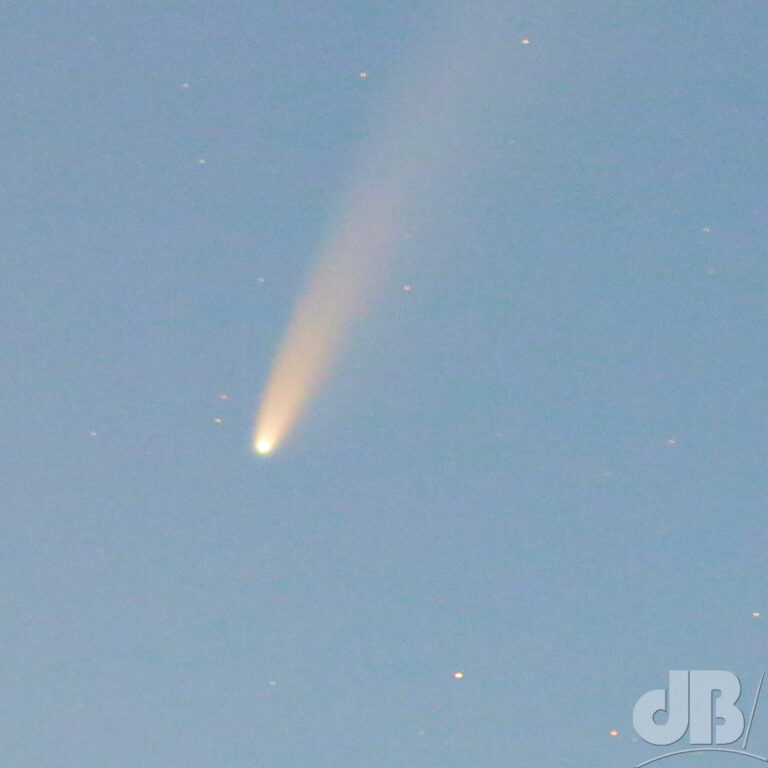TL:DR – Towards the end of 2024 there may be a bright, new comet in the sky. Comet C/2023 A3 Tsuchinshan-ATLAS
If you’re lucky enough to get a clear sky…it’s snowing here, so no chance…look up at the constellation known as constellation Serpens Caput with your big telescope and you might see a faint fuzzball. It’s an icy visitor from the far reaches of the solar system, the Oort Cloud, and it’s heading this way. Give or take. Thankfully, it is not on a collision course.
Right now, this comet, which was first spotted in early January is about a billion kilometres from Earth, just past the orbit of Jupiter. But, as we approach Christmas 2024, we might be in for a treat as it flares up and becomes visible to the naked eye. You can find all the details of the discovery, the name, and what to expect from Comet C/2023 A3 Tsuchinshan-ATLAS on the Universe Today website.

Late last year, you may well have caught sight of another comet, the green comet, C/2022 E3 (ZTF), which never did live up to hopes of outshining the stars. And, of course who can forget the early months of COVID when some of us were distracted by Comet NEOWISE [C/2020 F3 (NEOWISE)]. I managed to get some mediocre photos of that comet when we escaped COVID lockdown and had a few days at the coast.
Comets are typically named after their discoverers or a group of discoverers, with the addition of a prefix indicating the type of comet. The prefixes used are:
- “C/” for non-periodic comets (i.e. ones that appear irregularly)
- “P/” for periodic comets (one’s that return within 200 years)
- “D/” for comets that have been lost or have disintegrated
- “X/” for comets that are of an uncertain
Here are a few examples of some well-known comets with their colloquial names:
Comet Halley – This is perhaps the most famous comet, named after astronomer Edmond Halley who calculated its orbit and predicted its return in 1758. It is a periodic comet with an orbital period of approximately 76 years and was last seen in the inner solar system in 1986.
Comet Hale-Bopp – This was a non-periodic comet discovered in 1995 by Alan Hale and Thomas Bopp. I remember it being very bright in the sky for many months and would endlessly point it out to family and friends on night-time pub trips.
Comet Shoemaker-Levy 9 – This was a non-periodic comet that collided with Jupiter in 1994 and was destroyed. It was named after its discoverers, Carolyn and Eugene Shoemaker and David Levy.
Comet Lovejoy – This is a periodic comet discovered by Australian amateur astronomer Terry Lovejoy in 2011. It has an orbital period of approximately 7 years and was visible to the naked eye in the Southern Hemisphere.
Of course, whether Comet C/2023 A3 Tsuchinshan-ATLAS lives up to expectations in late 2024 will depend on the local solar weather conditions as the comet’s orbit brings it closer and closer to the sun. If conditions are right, it may well flare up and become visible to the naked eye, we’ll have just have to wait and see, with our telescopes, binoculars, and cameras at the ready.